A word on remembering timeliness as the Holiday Season approaches
One dark, slightly-snowy night not too long ago, a holiday mood descended upon campus. Spirits were high, festivities abounded, and as the clock struck midnight, the unmistakable pulse of Mariah Carey’s “All I Want For Christmas Is You” poured from speakers across campus. It was Halloween night, which seemed to transition seamlessly from a spooky season of black and orange to a festive premonition of the red and green of Christmas. The days following Halloween – All Saints and All Souls Day – were overshadowed by the emergence of the red holiday cups at coffee shops and a mental fast-forward to Christmas.
Yet, there was a palpable presence of timeliness as well. Masses were offered across campus in dorms, academic buildings, and the Basilica for All Saints Day – a holy day of obligation. Also on All Saints Day, Campus Ministry, the Institute for Latino Studies, and the Latino Student Association sponsored events for Dia de los Muertos, the Meso-American tradition commemorating loved ones who have died. Events included a procession across campus, a prayer service in the Basilica, and a subsequent reception. The evening featured music from student groups.
The days commemorating all saints and all souls serve as a reminder of death, but also as a sign of the hope for life after death, as Dia de los Muertos exemplifies. When we brush past these days, we pass up an opportunity for great hope.
The Program of Liberal Studies (PLS) enacts this memento mori each year with its All Souls Mass, in which current faculty and students gather to pray for the souls of deceased students and professors. This tradition began in 1986 after the surprising death of PLS alumnus and professor Stephen Rogers, which galvanized the program to institute a yearly Mass in remembrance of the beloved dead. A list of the names of the deceased is read at each Mass.
This year, the All Souls Mass took place on November 5 in Badin Hall’s St. Stephen Chapel with students, faculty, and family members in attendance. Dinner followed Mass in South Dining Hall, allowing students from all years to eat with professors and their families. Sophomore John Burke reflected, “One of the defining aspects of PLS is the strength of the community. That shone through clearly at the Mass and dinner. The faculty know and care for each other and each other’s families. They know when a loved one has died, and they care.”
Professor Thomas Stapleford, department chair of PLS, remarked that the Mass “has been the tangible reminder every year that we are part of a community that stretches back in time (almost seventy years now) and that we hope will continue long after we are gone. There’s something solemn and powerful in thinking that one day all of our names will be added to that list.”
The PLS All Souls Mass creates a space of remembrance, intentionality, and timeliness, allowing students and professors to set aside daily tasks and step into a community with, as Stapleford explained, both synchronic and diachronic dimensions. The celebration of All Saints and All Souls day offer a different approach to the semester. Rather than brushing past the remaining weeks, they invite us to take each day as it comes, to live with the final goal of Heaven, rather than break, in mind.
So as Thanksgiving approaches, we must remember the truest form of thanksgiving – eucharistia, the Eucharist. With the Eucharist at the center of the holiday, the celebration emphasizes the duties we have to others. Food drives within dorms and opportunities for service across campus and in the community provide a variety of ways to engage with the spirit of thanksgiving – one of gratitude to God and service to others.
And yet, when the leftover turkey and gravy is gone, it still isn’t Christmas, despite the movie listings on the Hallmark channel. The season of Advent, unintentionally trampled over by holiday shopping, Christmas parties, and Christmas lights, serves a necessary role in the life of the Church and the life of society. It reminds us that the good things of Christmas – and they are good things – must be considered in their proper place, namely the liturgical season of Christmas. We divorce Advent from December, lighting Advent wreaths and adorning Jesse trees, while living the double life of secularity with full vigor for the Michael Bublé Christmas album as soon as Thanksgiving ends.
Remember the timeliness of the seasons, for Thanksgiving, Christmas, and life itself should not be rushed, but anticipated, should not be trivialized, but entered into with great solemnity and joy. As G.K. Chesterton wrote, “There is no more dangerous or disgusting habit than that of celebrating Christmas before it comes, as I am doing in this article. It is the very essence of a festival that it breaks upon one brilliantly and abruptly, that at one moment the great day is not and the next moment the great day is.” Through the weeks to come, allow each day to break brilliantly and abruptly until, one day, Christmas dawns, more novel and more familiar for all the timeliness of your anticipation.
Mary Frances Myler is a sophomore majoring in the Program of Liberal Studies with a minor in Theology. She prefers living life off the grid on the shores of Lake Superior. Please send book recommendations to mmyler@nd.edu.
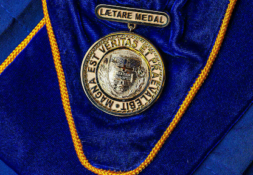
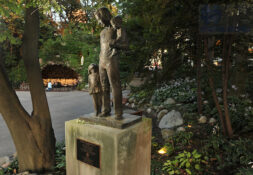
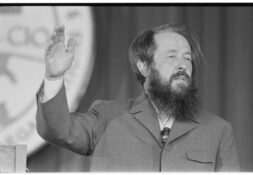
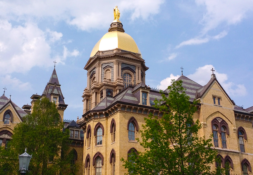
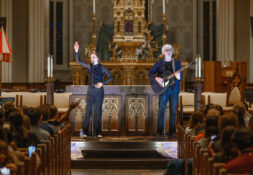

Leave a Reply